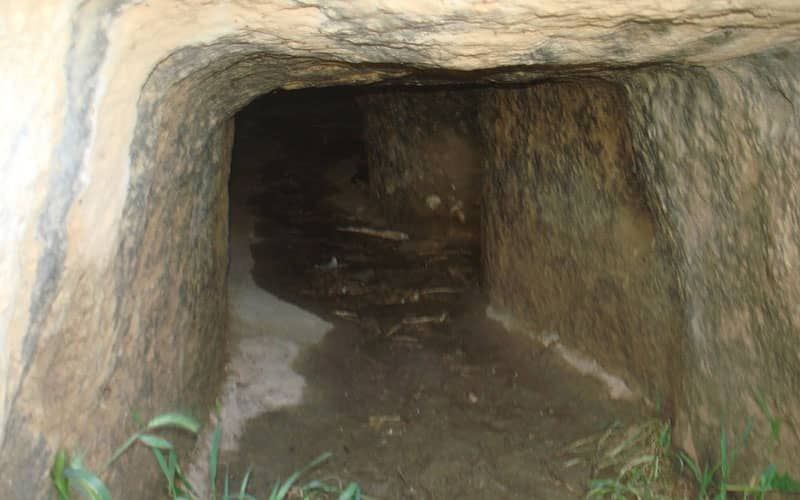Konte Stone is a historical monument and it is one of the historical hills of the ancient history of Kurdistan in the southern regions of Urmia and the border that is called Mahabad now. Its history traces back to the Mana era i.e., the first millennium BC and it was a model at that time to make such monuments in that area.
This precious ancient place is located 8 kilometers to the north of Mahabad city on the route to Urmia near Yousefkand village.
Konte stone area is one of the great and holy places of the old city of "Daryosa" or the ruined city which is an important and holy place for the people of this area. This historical place belongs to the era when Manas were governing the south of Urmia Lake and the area that is known as Mukeryan nowadays and they have left very important places such as Hassanlou in Naghade, Qalaychi in Bokan and Ziviyeh in Saqqez from the first millennium BC as a powerful state that played a great role in the political and cultural issues of this region.

Research on the Konte stone began in 1969. When "Wolfram Kleiss" found Konte stone when he was searching the Urartu monuments, he identified Konte stone as a part of the Urartu history.
Although this place was identified and recorded as a monument officially in 1985 as one of the most interesting places in Urmia Province, however, it is in a terrible condition without any proper care. The illegal digging has resulted in the plunder of most of the historical items of this civilization on the hill. Establishing factories, a long time of carelessness, and other similar reasons have caused Konte Stone to get destroyed.
The word Konte stone means "a stone with holes in it". Some people believe that the word Konte in the belief of this region's population meant holiness at the time.
Undoubtedly, "Konn" in Kurdish means old. That is, this word might carry two meanings: first, an old stone, and second, a stone with holes in it.

The fire temple of Konte Stone is a place made of stone with many stairs carved around it. This ancient place is as old as the first millennium BC which is the time when the Manas were in power and controlling this region.
There have not been any scripts to tell us what the real name of this place was. The people of the ruined city call this monument Konte stone which indicates the holiness of this stone in the eyes of these people.
There are several stone tombs, a castle, and several rows of stairs in this place that are carved very elegantly on the stone. The general view of this place looks like a Zigorat or a temple. What is interesting about this place is the lack of decoration or colors in the structure. In other parts of Konte stone, there is a canal for water, a wall for protection and resistance, and the signs of an ancient dam left of the Manas.

It cannot be said what was the role of the Konte stone monument for sure. Some assume it must have been a place for worshiping or carrying out religious rituals of Mehr or to hold religious ceremonies in it and some others identify it as the fire temple of the Mana empire.
The carved stones can either belong to the Manas or the Urartu; however, we need to know that these decorated stones alone are not enough to reveal an exact history. Thus, according to the tiles found in Konte stone that belong to the Iron Age it is said that this place belongs to 850 to 550 BC. Based on the scholars' point of view, these tiles are special to the Manas culture and art as similar ones have been found in other places belonging to Manas.

Some other experts disagree and they consider this place as a fire temple similar to a Zigorat with stone hard stairs that remind us of the structure building of the first millennium BC. In the middle of this building, there is a square shaped hole that might have been lightened up during the holy ritual they had for fire. Then, the people would sit on the carved stairs and pray and carry out special rituals.
Regarding the statues on the mountain, one can say that it was generally used for religious rituals and the front stone where Mahabad road passes by it was used to bury the prayers and the temple's officials.
There has not been any serious research on this monument so far and like other monuments of the East part of Kurdistan, this place has been ignored by the Iranian government.








